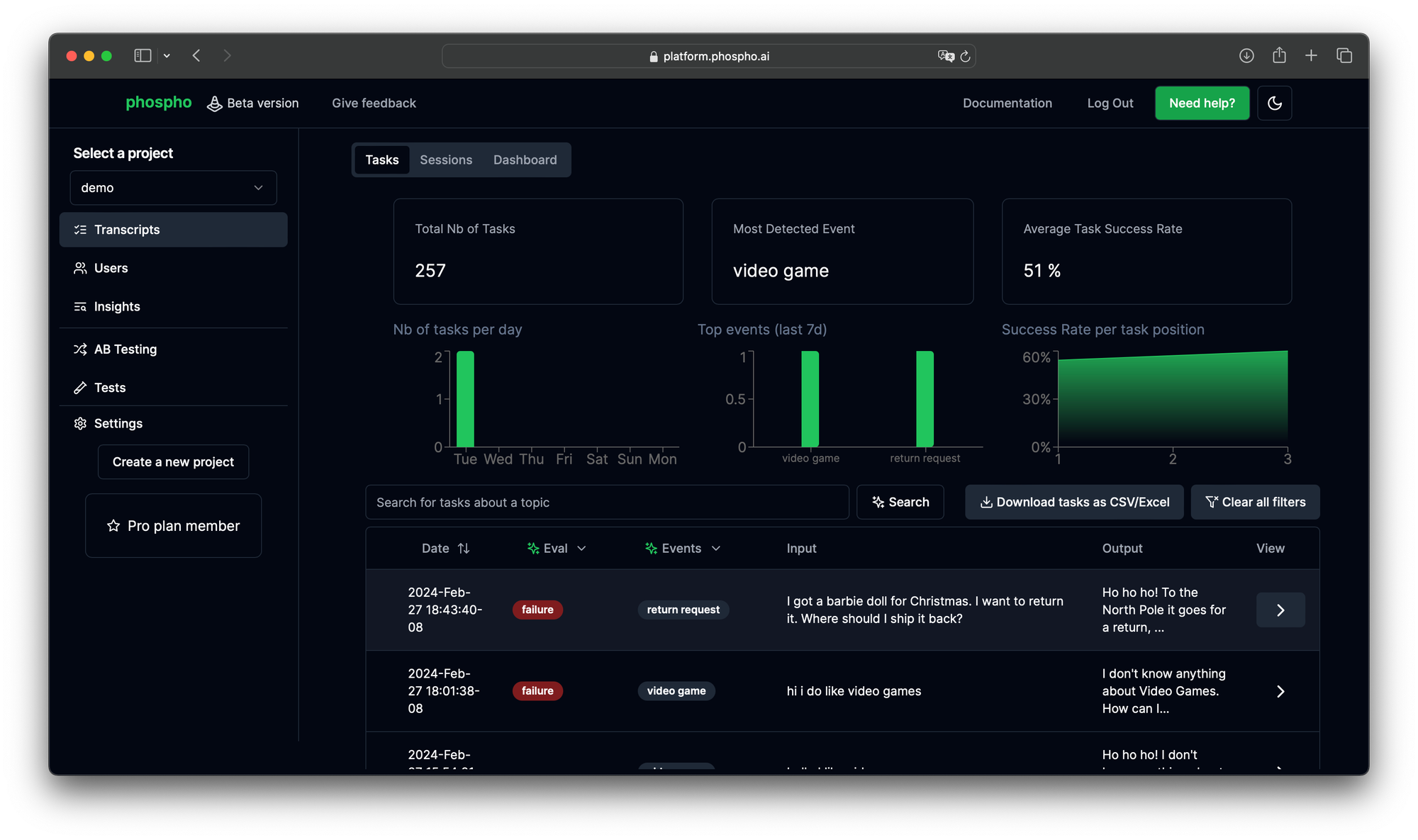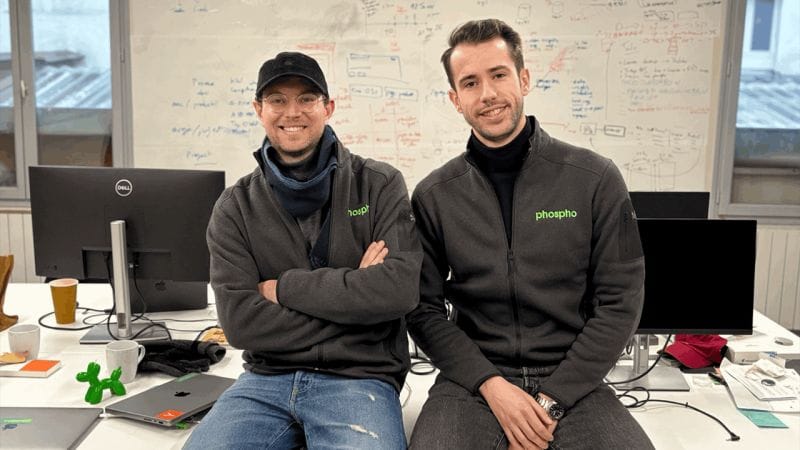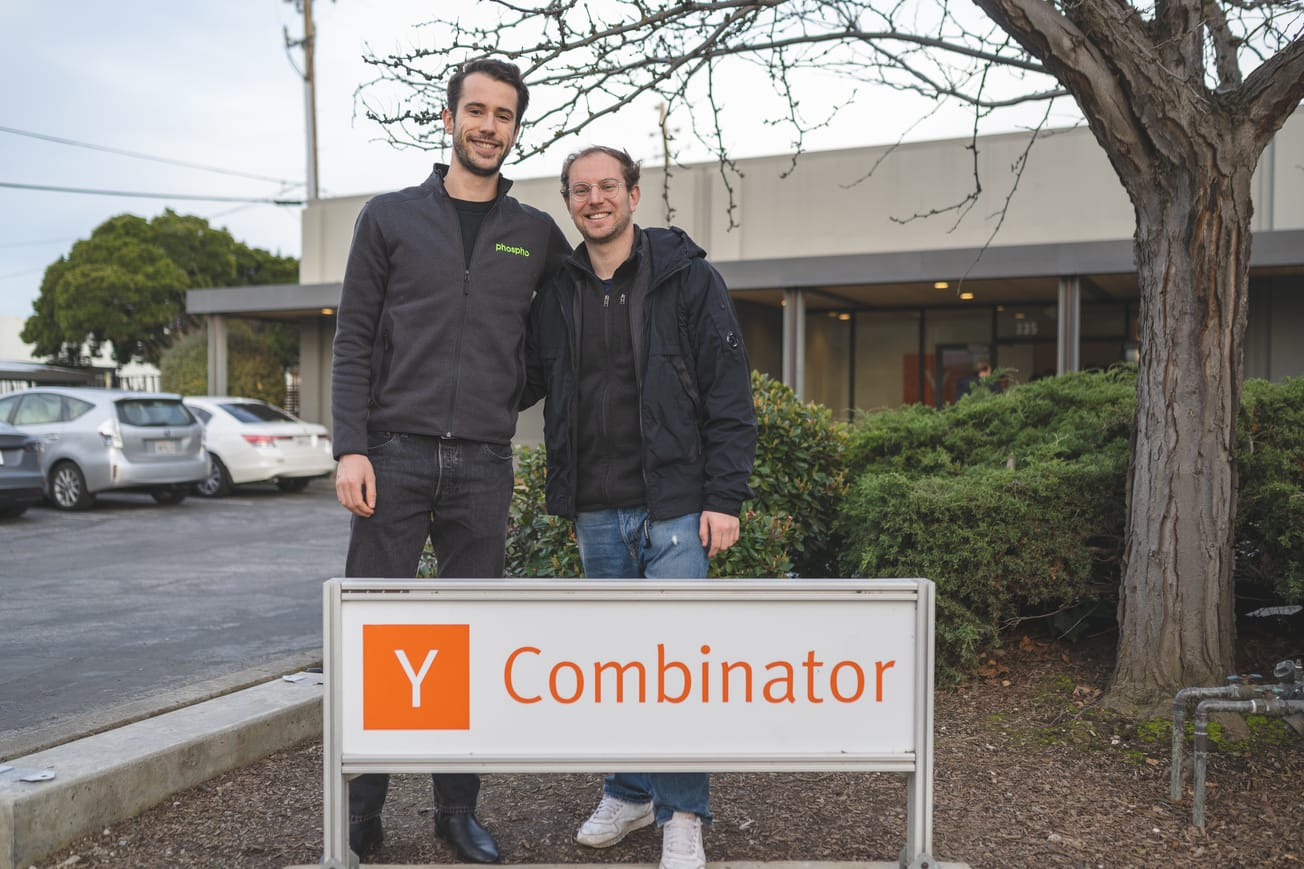The frenzy around all things GenAI at the moment means that companies are getting thrust into the fundraising limelight almost at the very moment of conception. Phospho didn't quite raise its Pre-Seed round that early, but it wasn't far off.
In this case, two college buddies grew intrigued by the potential of this emerging technology, came up with an early concept, and the next thing you know they have a couple of million euros in their bank account and are participating in the prestigious Y Combinator accelerator in Silicon Valley.
With the massive checks being written and the number of people rushing into the GenAI space, it might seem like a daunting challenge to stand out. But Phospho has also embraced an old Silicon Valley maxim: During the Gold Rush, it was the people who sold the picks, shovels, and other supplies who made money rather than most of the prospectors.
Co-founder and CEO Paul-Louis Venard said in an interview that Phospho's goal is to help GenAI teams gain greater insight into how their tools are being used.
"We're addressing the problem that so many developers deploy to users and basically had no idea of what was happening, who their users were, how they were interacting with the product," Venard said. "So they were completely blindsided by what was happening. So we decided to provide them with a tool to help them to understand what is working and what is not working."
What is Phospho?
Phospho's platform is built to guide developers through the process of building and deploying a GenAI-driven service. By offering tools that enable testing and monitoring, the goal is to give greater insight and control so developers can rapidly move through the prototyping phase to the product launch phase.
Using Phospho, a developer defines the relevant metrics and then monitors the quality of their app's responses. The platform also can automate the process by sending out alerts when it identifies potential issues.
Why?
While there has been a surge of interest in LLM applications, it remains challenging for developers to produce and launch working versions. Those that have released beta or public versions are experiencing poor usage and high churn. For all the potential power of this emerging AI, the tools to evaluate and adjust the functionality are lacking, forcing developers often to read through logs to understand what is working and what is not working.
Under The Hood

Phospho's monitoring platform is designed to be used by tech and product teams.
Venard said that one of the biggest problems with GenAI is that the very nature of LLM introduces a degree of randomness into the development and content creation process. Existing development tools aren't adapted to that, and developers can't rely on them to monitor the metrics needed to continually identify problems and improve the product so that user experience gets better.
Phospho attacks that with 3 tools:
- Monitor: Defines critical metrics so developers can receive clear insights regarding all user interactions.
- Detect: Reduces problems like hallucinations with algorithms that can spot and classify anomalies.
- Improve: Generates analytics that can be used to run tests and gain insight into user behavior, which in turn allows for more rapid iteration.
The combination of qualitative and quantitative insights can be enabled by inserting short pieces of code into the application so performance is not impacted.
Phospho's Github repo is here: https://lnkd.in/dXWQqXKE
Who?

Pierre-Louis Biojout and Paul-Louis Venard co-founded the company last year. They met as students almost two years ago at France's famed engineering school École Polytechnique where they studied applied mathematics and computer sciences before graduating in August 2023.
During their studies, they decided to start a company together, though initially, they didn't know exactly what that would be. As GenAI was exploding, they explored several different applications but quickly became frustrated by the lack of developer tools that were commonly available for other types of programming.
"We started building different kinds of tools and we realized the tools to do this kind of stuff were not yet there, especially for monitoring and observability," Venard said.
The Full Scoop...
Subscribe to get Phospho's funding details, a breakdown of its investors, and its roadmap to raising a Series A round.








